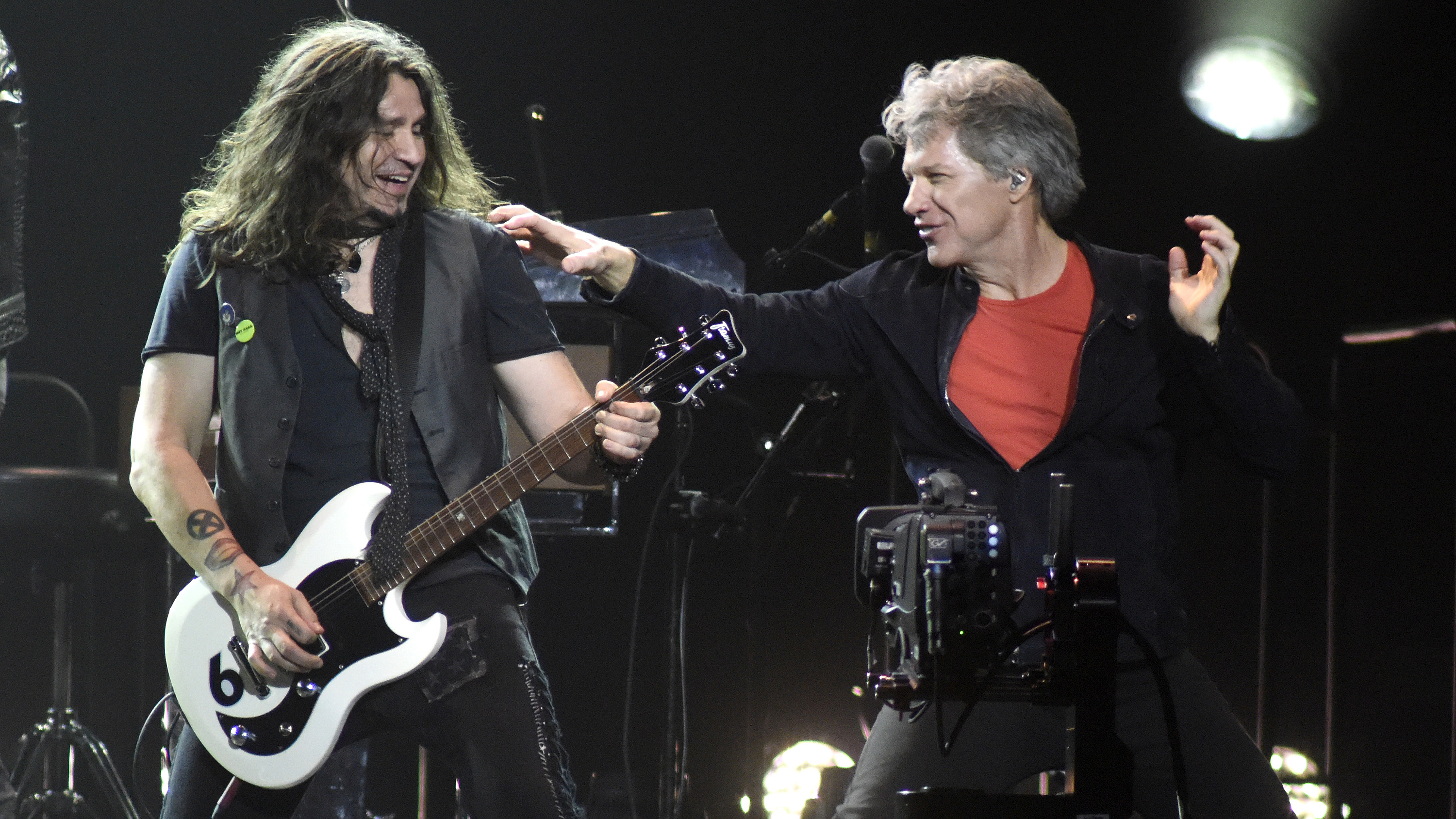
Guitarist Phil-X has played countless sessions and shows, and now confidently moves between stadiums to small clubs as Bon Jovi's guitarist and with his own trio, The Drills. He's used to adapting and thriving in changing situations, but in his new interview with Dinesh Lekhraj of the Gibson Gear Guide, he reveals that using in-ear monitors with Bon Jovi had an unexpected consequence on his rig.
"There are overdrives that work great when you're standing in front of your amp and don't won't great in your in-ears. Crazy, right?" says Phil. "I'm like, 'Oh shit, I need a whole new game for this gig'. We're rehearsing and when everybody goes for lunch I'm auditioning 24 overdrive pedals to see what works in my in-ears."
The room sound Vs the in-ear monitor sound clearly has an impact on EQ. But Phil's Bon Jovi amp settings don't change.
"My amp is my perfect rhythm sound, then I need an overdrive for Raise Your Hands, a need a different overdrive for a country solo like Lost Highway and then a different overdrive for somewhere in between. So there's three flavours and they'll change, even on tour. I'll try something else at soundcheck."
Now a lot of those guitar players play with more gain because they don't want to work as hard
But these choices shouldn't be confused with a fixation on swathes of gain. Phil is very much in favour of not soaking his playing in drive.
"With the Drills it's two overdrive pedals – one for a little more and one for a lot more, but it's never too much. It's never feeding back because there's so much gain."
"It's not like finding a forgiving tone and being sloppy," Phil adds. "It's never, ever about that for me. It's about always sounding clean and if I can do it with less gain, the audience get more of it – they get more choice, more choice notes and more vibe. As opposed to blistering with all this gain. And I've noticed that a lot my favourite guitar players back in the day had way less gain, because they didn't have all that gain. And now a lot of those guitar players play with more gain because they don't want to work as hard. I don't know, is that it?"
Want all the hottest music and gear news, reviews, deals, features and more, direct to your inbox? Sign up here.
Phil also points out in the video above that people are surprised how little gain he uses when they plug into his rig. But it's an idea he's even carried into his session work – namely Chris Daughtry's self-titled debut album where he made such an impression working alongside drummer Josh Freese, he was hired for a lot more session work because of it.
As soon as you come in and turn more gain on, everything gets really washy… and you don't hear the clarity of the chord
"It's the same thing with the Daughtry record. Everyone thinks the wall of guitars is enormous. But what makes it enormous is an old Marshall Plexi and a Gibson [Les Paul] Jr or Les Paul with no overdrive [pedals] or nothing, just making it clear and thick. And that's why it sounds like that. And as soon as you come in and turn more gain on, everything gets really washy… and you don't hear the clarity of the chord. When I hit a chord, I want to hear the separation of the strings, I don't want it to be a wash.
"And I think that's what's also happening when I hear a lot of direct stuff, like when I hear a Kemper or a Fractal. There are three telltale characteristics that scream 'fake' to me. One is squeals sound fake, chugging sounds too EQ'd out – it's not speakers pouncing on something, there's no violence. It's just woofy. And then the third one is when you hit a chord, all the notes mesh together. They don't stand out."
So we can count Phil-X out of using an amp modeller for convenience then?
"When you do fly dates and you order a JCM800 stack somewhere, like I just went to Indonesia and Romania over the Summer and there it is, you plug it in and you're not always going to get a great amp.
"You work with it," adds Phil. "It's not going to be what you're used to and you need to adjust."

Rob is the Reviews Editor for GuitarWorld.com and MusicRadar guitars, so spends most of his waking hours (and beyond) thinking about and trying the latest gear while making sure our reviews team is giving you thorough and honest tests of it. He's worked for guitar mags and sites as a writer and editor for nearly 20 years but still winces at the thought of restringing anything with a Floyd Rose.